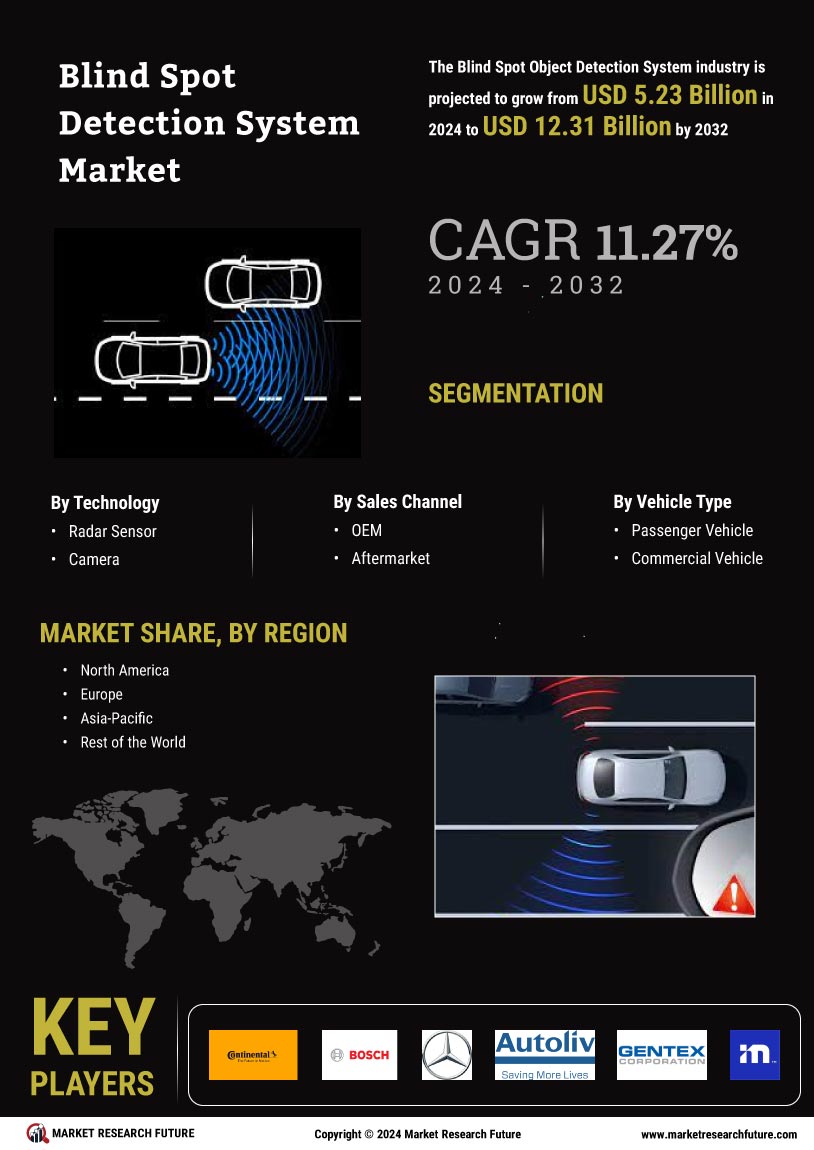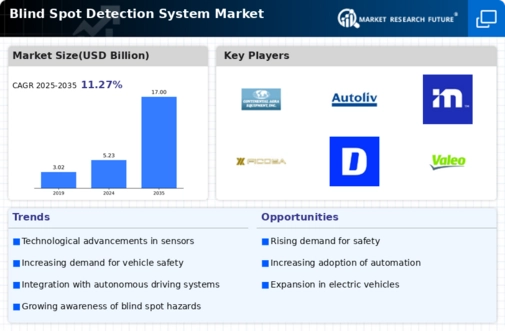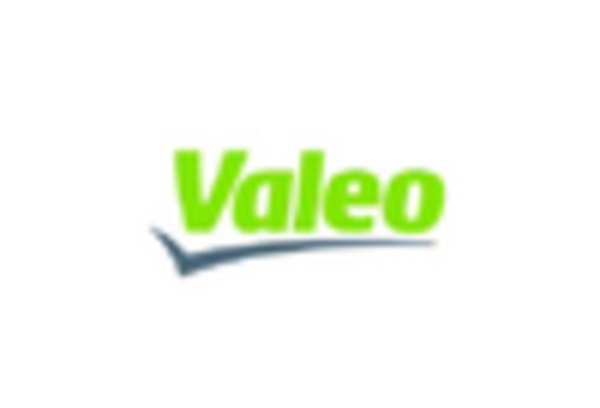Leading market players are investing heavily in research and development in order to expand their product lines, which will help the blind spot object detection system market grow even more. Market participants are also undertaking various strategic activities to expand their global footprint, with important market developments including new product launches, contractual agreements, mergers and acquisitions, higher investments, and collaboration with other organizations. To expand and survive in a more competitive and rising market climate, the blind spot object detection system industry must offer cost-effective items.
Manufacturing locally to minimize operational costs is one of the key business tactics manufacturers use in the global blind spot object detection system industry to benefit clients and increase the market sector. In recent years, the blind spot object detection system industry has offered some of the most significant advantages.
Major players in the blind spot object detection system market, including Continental AG (Germany), Robert Bosch Gmbh (Germany), Daimler AG (Germany), Autoliv (Stheyden), Gentex Corporation (US), Mobileye (Israel), Friedrichshafen AG (Germany), Ficosa (Spain), Delphi Technologies (UK), Nissan Motor Co Ltd (Japan), Denso Corporation (Japan), Magna International Inc (Canada), Valeo (France), Hitachi Aamito Americas, Inc (Japan) and others, are attempting to increase market demand by investing in research and development operations.
Continental AG (Germany), creates cutting-edge services and technologies for connected, sustainable transportation of people and their goods. Established in 1871, the technology business provides safe, effective, intelligent, and reasonably priced solutions for machines, traffic, and transportation. Continental generated €39.4 billion in sales in 2022 and currently employs about 200,000 people across 57 markets and countries. At Continental, they have relentlessly pursued ground-breaking concepts to make the future better for everyone.
They are among the pioneers of the global mobility transformation and constantly push the boundaries of what is possible. A safer, cleaner, and more effective mobility experience will undoubtedly be made possible by their display solutions and the collaboration with Ambarella for future autonomous mobility. They are they-positioned to shape the future of mobility thanks to 20,000 software experts and 150 years of engineering excellence.
Valeo (France), the first friction materials made in France, was created by SAFF, which started in a small workshop near Paris under the direction of automotive pioneer Eugène Buisson. SAFF played a significant role in the automotive revolution at the turn of the 20th century. On the eve of World War II, it dominated the brake linings and clutches manufacturing market. It had grown to have 2,500 workers by the beginning of the 1950s.


















Leave a Comment